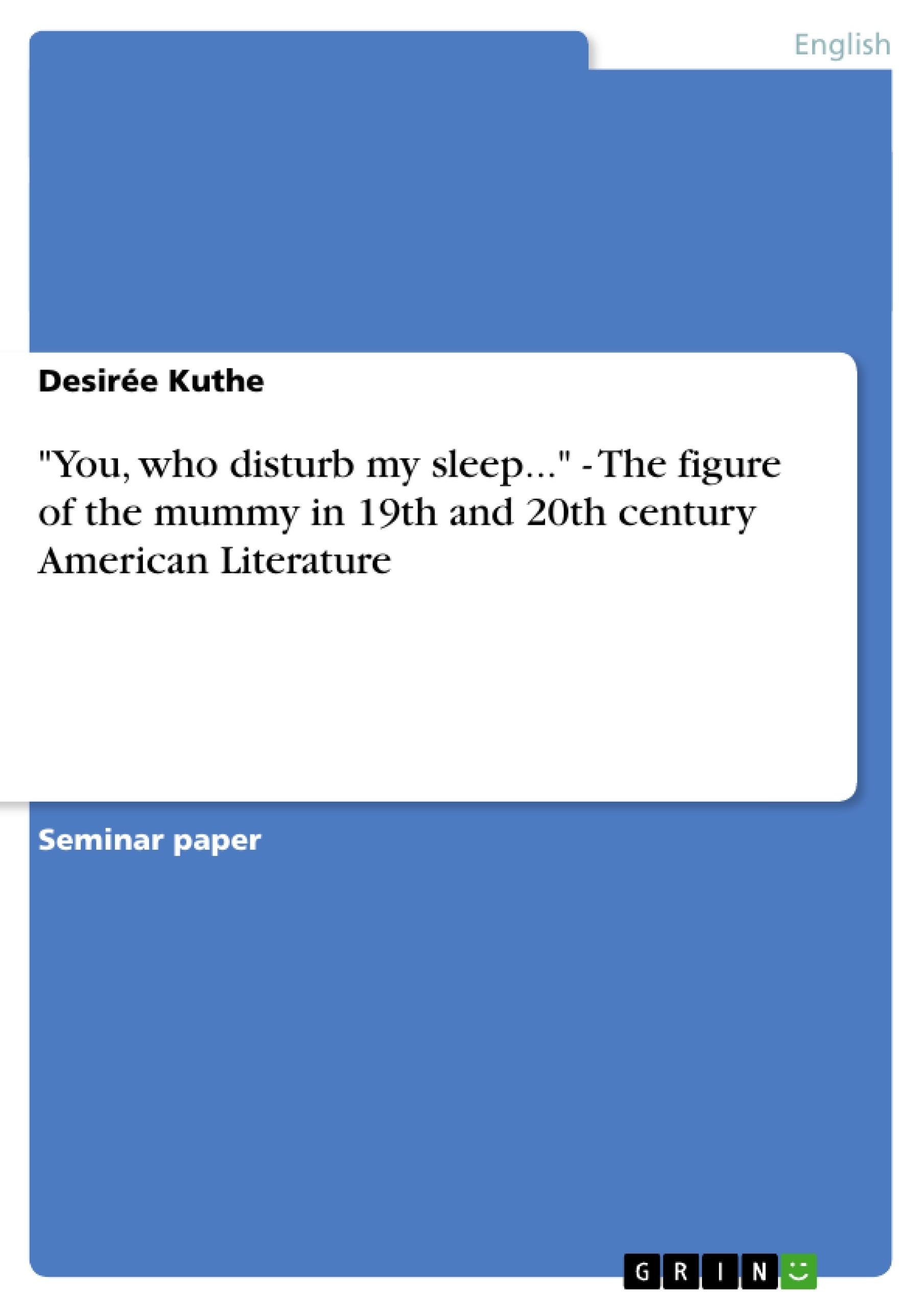The fascination with old Egypt, which came up in the western world after Napoleon’s conquest of Egypt in 1798 and reached a peak in 19th century America, was uttered in a vast amount of novels and stories concerned with Egypt and its symbols. One of the most important of these symbols, among pyramids and Pharaohs, is the mummy - the human body, which has ‘survived’ not only centuries but millenniums.
The interest of novelists with Egypt in general and the mummy in particular may have been in its zenith in 19th century, but it has never completely ceased, as the great variety of books about mummies recently published shows.
In this paper, Louisa May Alcott’s “little-known short story” (Trafton 2005:126) Lost in a Pyramid or the Mummy’s Curse, which was published in 1869, will be compared to a novel by Anne Rice: The Mummy or Ramses the Damned, having been published in 1980, but having chosen a setting at the beginning of the 20th century (1914).
This paper wants to show, that in spite of having been written with 111 years’ time distance, the two texts, use a surprisingly similar set of themes and motives to develop their story. After a short exploration of the historical background of the two texts, I will try to identify and analyze these elements. The examination of the single motives will then lead to the question of a general classification of the two texts, answering the question if, or if not, they belong to the Gothic genre.
This paper will also try to make clear, that regardless of the similarity of the set of conventions used in the texts, the means with which this set has been used differ very much.
Inhaltsverzeichnis (Table of Contents)
- Introduction
- I. Historical Background
- II. Themes and Motives
- 1. Flowers
- 2. Beauty, attraction and eroticism
- 3. The protagonists - Character and Fate
- 3.1 Character: Julie and Evelyn
- 3.2 Fate: Evelyn, Paul and Henry – Julie and Elliott
- 4. The Egyptologists
- 5. Revenge
- 6. Terror
- 7. Race
- III. Gothic Literature
- Summary
- Literature
- 1. Primary Literature
- 2. Secondary Literature
- 3. Audiovisual Media
Zielsetzung und Themenschwerpunkte (Objectives and Key Themes)
This paper compares Louisa May Alcott's short story "Lost in a Pyramid or the Mummy's Curse" and Anne Rice's novel "The Mummy or Ramses the Damned," analyzing the themes and motives used to develop their respective narratives despite being written 111 years apart. The paper aims to highlight the similarities and differences in their approaches, exploring the question of whether these works belong to the Gothic genre.
- The impact of historical knowledge on the portrayal of ancient Egypt
- The recurring theme of reincarnation and its symbolism
- The portrayal of mummies and their relationship to beauty, attraction, and eroticism
- The role of Egyptologists in the narratives and their connection to scientific research
- The exploration of themes like revenge, terror, and race within the context of the mummy narratives
Zusammenfassung der Kapitel (Chapter Summaries)
The introduction provides a brief overview of the fascination with ancient Egypt in 19th and 20th century American literature, highlighting the mummy as a significant symbol. The paper focuses on comparing Alcott's "Lost in a Pyramid" and Rice's "The Mummy," setting the stage for a comparative analysis of their thematic and narrative similarities.
Chapter I, "Historical Background," examines the different levels of knowledge about ancient Egypt available to each author. The paper notes the significant advancements in Egyptology during the 19th century, particularly after the deciphering of the Rosetta Stone. This chapter analyzes how both authors utilize historical facts to varying degrees, showcasing Rice's greater access to detailed knowledge and Alcott's reliance on more generalized information.
Chapter II, "Themes and Motives," delves into specific themes and motifs shared by both texts. The paper focuses on the symbolic use of flowers in both works, highlighting their connection to the mummy's reincarnation. The comparison of the flowers' origin and function in each narrative reveals interesting differences in their symbolism.
Schlüsselwörter (Keywords)
The main keywords and focus topics of the paper are: 19th and 20th century American literature, ancient Egypt, mummies, reincarnation, Louisa May Alcott, Anne Rice, Gothic genre, historical background, thematic similarities, symbolic use of flowers, Egyptology, scientific research, revenge, terror, race.
- Citation du texte
- Desirée Kuthe (Auteur), 2006, "You, who disturb my sleep..." - The figure of the mummy in 19th and 20th century American Literature, Munich, GRIN Verlag, https://www.grin.com/document/77749



